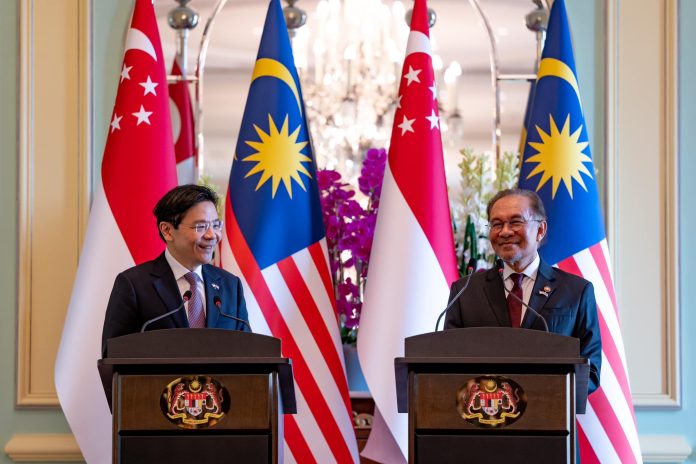
Malaysia and Singapore have established a partnership in climate action through the signing of a Memorandum of Understanding (MoU) on Collaborative Approaches under Article 6, Paragraph 2 of the Paris Agreement.
The Memorandum of Understanding was signed on 6th January 2025, by Singapore’s Deputy Prime Minister and Minister for Trade and Industry, Gan Kim Yong, and Malaysia’s Minister of Natural Resources and Environmental Sustainability, Nik Nazmi Nik Ahmad.
Both ministers subsequently exchanged the Memorandum of Understanding at the 11th Malaysia-Singapore Leaders’ Retreat on 7th January 2025, which was observed by Singaporean Prime Minister Lawrence Wong and Malaysian Prime Minister Dato’ Seri Anwar Ibrahim.
According to a statement from the Ministry of Natural Resources and Environmental Sustainability (NRES), both countries look forward to establishing a binding bilateral agreement and have affirmed their continued partnership for sustainable growth and environmental stewardship.” the statement ends.
Meanwhile, UNFCCC website, states Article 6 of the Paris Agreement is of Cooperative Implementation and it recognises that some parties choose to pursue voluntary cooperation in the implementation of their nationally determined contributions to allow for higher ambition in their mitigation and adaptation actions and to promote sustainable development and environmental integrity.
Article 6, Paragraph 2, of the Paris Agreement provides a framework for countries to approve and report cross-border trading of emissions reductions and removals, use carbon markets to help achieve their Nationally Determined Contributions (NDCs) and cooperate on emissions reductions.
One of the primary goals of the Paris Agreement, as outlined in Article 2, is to drastically lower the risks related to climate change by limiting the global average temperature increase to well below 2 degrees Celsius over pre-industrial levels and striving to keep it to 1.5 degrees, according to the UNFCCC Reference Manual.
The additional goals are to support development pathways with low GHG emissions, align financial flows with these pathways, and strengthen countries’ ability to adapt to the adverse effects of climate change.



